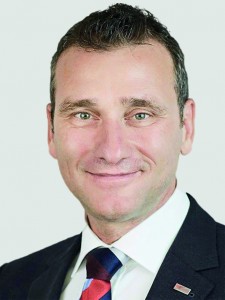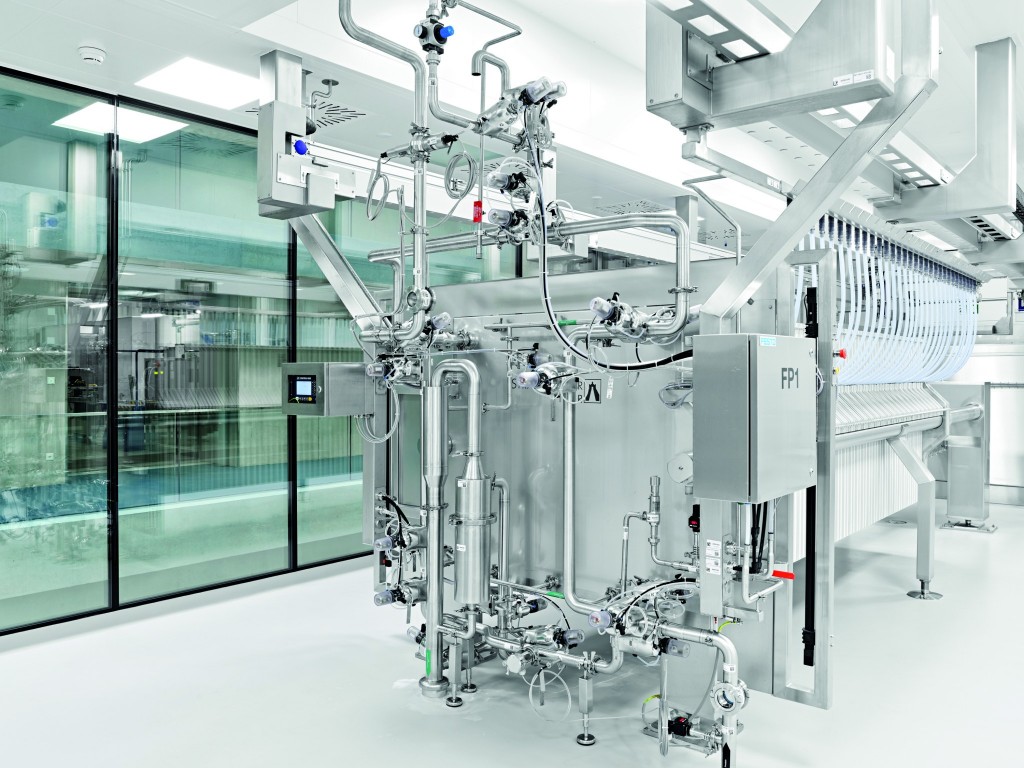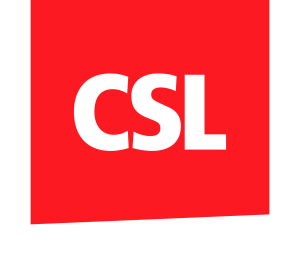- Get directions
- Leave a review
- Claim listing
- Bookmark
- Share
- Report
- prev
- next
- Tuesday, April 20, 2021 @ 10:00 am
Investing in Switzerland: Find out how CSL Behring is keeping the promise with lifesaving innovation.
For over a century, CSL Behring (CSLB) has kept its founding promise to help patients suffering from rare and serious diseases. It specializes in the manufacture of medications for treating immune deficiencies and disorders of the immune function, as well as medications for rhesus prophylaxis and albumin solutions for shock and burn victims. Martin Schären, Senior VP and General Manager of CSL Behring AG in Bern, explains how the company continues to innovate and deliver life-saving medicines.

Martin Schären
CSL Behring AG, Bern | Senior VP and General Manager
From your portfolio of projects in development, what are the most exciting assets on which you’re currently working?
Our strong Research & Development (R&D) pipeline utilizes our expertise in plasma fractionation, recombinant technology, and cell and gene therapy to develop and deliver new and improved products. These address unmet medical needs or enhance current treatments in five therapeutic areas: immunology, hematology, cardiovascular and metabolic, respiratory, and transplant. In each of these therapeutic areas, we have many exciting and very promising assets in our R&D portfolio.
Examples include:
CoVIg-19 hyperimmune
The Phase III study, in which the CoVIg-19 Plasma Alliance is participating, enrolled its first clinical trial participant in early- October 2020. The study will take several months to complete but if successful will form the basis for regulatory submissions. The CoVIg-19 hyperimmune medicine has the potential to treat individuals with serious complications from COVID-19.
CSL112 for early recurrent cardiovascular disease (CVD) events following acute myocardial infarction (MI)
We are advancing a Phase III study for potential treatment of acute coronary syndrome. The trial is evaluating the efficacy and safety of CSL112 during the high-risk 90-day period following a heart attack.
Lentivirus-based gene therapy of hematopoietic stem-cells
We are advancing the lentivirus-based gene therapy technology acquired a few years ago from Calimune. A first product for the treatment of sickle cell disease (SCD) is currently in Phase I.
The same technology is used in a second product to treat primary immune deficiency (Wiskott-Aldrich-Syndrome) and entered development a few months ago.
What efforts has CSL Behring made to address the rare disease community’s concerns around the pandemic?
Thanks to our strategic partnerships and collaborations with academia, industry, and governments, we were able to respond rapidly to the public health crisis. In additional to our usual programs which provide help and support for patients and their families, throughout the pandemic we have increased our online programs and media presence and have introduced a number of activities and initiatives across our affiliates. These are directed at specific patient groups or highlight the value of plasma and its relevance to the rare disease community in the current crisis.
CSLB has many ongoing projects to combat the novel coronavirus:
1. We co-founded the CoVIg-19 Plasma Alliance together with Takeda, who also run a manufacturing site in Switzerland, in Neuchatel, an unprecedented industry partnership of more than 10 plasma industry companies, to develop a hyperimmune for treating COVID-19.
2. An agreement with AstraZeneca means that CSLB will manufacture the Oxford University vaccine candidate for distribution in Australia. The vaccine is manufactured at our facilities in Melbourne, Australia, and first doses are scheduled for release in early 2021.
3. CSLB is developing an investigational, anti-SARS-CoV-2 plasma hyperimmune product for the Australian market. This will be used to treat people with serious complications from COVID-19. Manufacturing for the clinical trial has already started.
CSL Behring has a new CHF 300M, state-of-the-art immunoglobulin manufacturing plant (project Protinus) in the Swiss canton of Bern. How was the site chosen, and what is your experience in Switzerland?
Decisions on the location of capital investments are based on a site selection process that sits within the company’s network strategy. Key considerations include critical mass, existing technical expertise and capability, infrastructure, access to a supplier’s network, regulatory risk, ongoing government and industrial relations, financial stability, and possible synergies.
When it came to project Protinus, the deciding factors were time to market and the proven track record of the Bern site. Proven track record relates to those typical Swiss virtues; namely reliability, precision and quality work. Our experience in Switzerland is that it usually requires less effort to meet deadlines and to achieve objectives on time and within budget.
You have R&D and regional headquarters in Switzerland. What role does Switzerland play in your global strategic corporate footprint?
Switzerland plays an important role for our global business. At the Bern site we are the Center of Excellence for immunoglobulins (Ig). The therapeutics we manufacture are key drivers in the success and solid growth of the company. The demand for our Ig-therapies and portfolio remains strong and they continue to perform well.
R&D fuels the company’s sustainable growth by advancing world-class science, technology, and collaboration. At sitem- insel AG, where we have our R&D hub next to the Insel Hospital in Bern, we are very pleased to have scientific experts so close to our manufacturing site. Our team of around 70 researchers fosters the important dialogue between industry and academic research, and promotes technology transfer and operational cooperation, as well as our network of strategic alliances.
Reinforcing our focus on R&D in Switzerland, we have entered a partnership with BaseLaunch. This is an accelerator and incubator for early-stage ventures developing cutting-edge therapeutics, headquartered in Basel. The partnership will help us to identify and build relationships with potential external collaborators throughout Europe, which in turn will strengthen our position in Switzerland. Equally, our Research External Innovation (REI) team has entered a collaboration with Biopôle in Lausanne to offer additional R&D and technology development opportunities.
What are the challenges and trends in biologics production and what innovations have you achieved in your manufacturing processes?
Our main challenge is to continuously optimize our manufacturing processes and improve process recoveries at our already high performing facilities. Efficient and effective supply chain management is also crucial to our success, and we need to build flexible organizations that are agile and able to react promptly to customers’ and/or stakeholders’ needs.
At CSLB, we have reacted to these challenges and believe that we are well placed to respond to future trends. Just recently, we established an End-to-End (E2E) Operations organization across the company, along with a strategic review of E2E supply chain. We also implemented a new enterprise resource planning (ERP) across our global network.
We are a purpose-driven company with a values-based culture. All of our 27,000 employees are working to implement our longstanding promise to deliver the latest technologies that save lives and protect the health of people around the world.
Innovation is one of our five global core values and a pillar in our global strategy - but perhaps most important is the continuous investment in our people.

